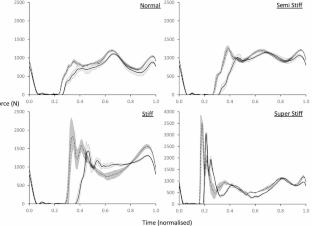Repeated jumping has been demonstrated as a feasible exercise countermeasure in microgravity and has been shown to reduce deconditioning in head down bed rest studies. However, varying landing stiffness may provide greater contribution of both axial and medio-lateral bone strain and muscle loading at greater muscle lengths, which may help minimize bone and muscle deconditioning. Therefore, this study investigated the effect of different landing styles on the force profile and ground contact time during repeated jumping using HIFIm in microgravity. Two participants performed repeated jumping on the HIFIm jump sled in microgravity during a parabolic flight campaign. ‘Ground’ forces and ground contact time were compared between landing styles where increased landing stiffness was instructed to the jumper, and increased spring resistance. The results show that the forces experienced when performing repeated jumps in microgravity are sensitive to the landing style employed. As greater stiffness was instructed, peak forces increased, and ground contact time decreased significantly. Peak forces and ground contact time also significantly increased when spring resistance increased. These results highlight that landing instructions and spring configurations could be used as training variables when developing an astronaut training program, which can use different jump styles to minimize bone and muscle deconditioning. Further research using bed rest analogs and repeated jumping using HIFIm is needed to demonstrate varied repeated jumping interventions as an effective exercise method for minimizing deconditioning in astronauts.




